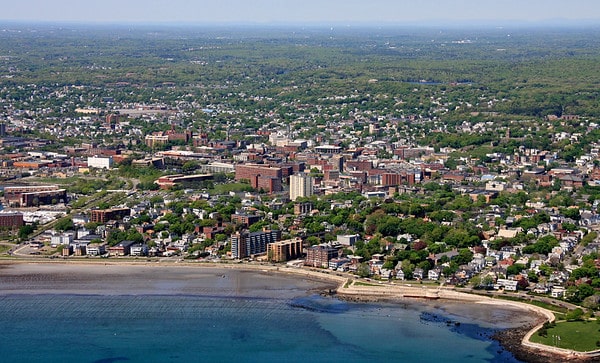Buoyed by sky-high rounds of funding, competition for space and increasing rents, it seems that Boston and Cambridge may be a victim of their own success. As neighborhoods such as Kendall Square, Central Square and Allston are transformed by entrepreneurs and large companies driven by innovation – and with the city’s workforce equally focused on convenience, transportation and affordability – the Boston area has reached a tipping point. The question facing developers is simple: How do you accommodate the increasing number of people and companies competing for space within the city limits?
The obvious answer: you don’t. Boston’s population has grown nearly 10% to almost 700,000 since the last census in 2010. And coupled with the numerous tech giants, startups and biopharmaceutical companies flocking to areas like the Seaport District, that strain has, in effect, helped the city’s unique business ecosystem become a boon for the entire Greater Boston region. Today, Greater Boston has a population of 8.1 million, the sixth-largest in the country. As a result, a number of new housing and retail developments have sprung up in places as close as Somerville and Watertown and as far as the North Shore. Here are a few recent projects we think embody the modern revitalization of Boston’s neighboring towns and their links to the city:
The Lynn Waterfront
For years, the city of Lynn didn’t take full advantage of its close proximity to Broad Sound and Nahant Bay and its expansive views of the Boston skyline. Today, city officials are updating its Waterfront Master Plan, and several developments are already underway for the stretch of waterfront property accessible to both the Lynnway/Rt. 1A and public transportation. The former Porthole Restaurant will be replaced by as many as 60 luxury condominiums – the $30 million development is expected to be completed in the fall of 2021. The long-vacant former Beacon Chevrolet site, dubbed North Harbor, will feature 332 market-rate apartments across several buildings. And the $500 million redevelopment of the former General Electric gear shop will feature apartments, boutique retail, restaurants and more on a 65-acre site off the Lynnway with a walkway to the River Works MBTA commuter rail station, offering an easy twenty-minute ride between Lynn and North Station.
Last year, the city announced $230 million in development projects planned for the future, with several projects within easy driving range of downtown Lynn, Swampscott and Marblehead and their many retail and restaurant options. And as a next step, these waterfront developments could encourage the relaunch of ferry service from a brand new $7.5 million terminal, providing an essential link to Boston that would help reduce the number of cars on the road during rush hour.
Revere Beach and Wonderland Station
A pedestrian bridge, plazas, and park renovations are already under development on property adjacent to the Wonderland MBTA station, part of a larger effort to revitalize Revere. The Wonderland MBTA station connects commuters to several North Shore communities, Logan Airport and the Government Center, State Street and Bowdoin stations in Boston.
And at Waterfront Square at Revere Beach, nearby parking lots have been suggested as sites for residential, retail, restaurant, hotel, entertainment, and office space. In addition to the redevelopment of the former Wonderland Greyhound Park just across from the Wonderland Station, the next steps include the construction of a new commuter rail station behind the Wonderland property, and close to the former New England Candy Company site (NECCO).
Suffolk Downs in East Boston/Revere
Located down the road from Revere Beach is one of the busiest development areas in the Boston region. The shuttered Suffolk Downs racetrack may not become home to Amazon’s second headquarters, but this 161-acre parcel is brimming with possibility. For instance, last year, the Boston Planning and Development Agency signed off on plans for two office buildings on the site. And over the next several years, the developer, HYM, plans on building 16.5 million square feet of new space, including 10,000 apartments and condominiums, along with office space for 25,000 workers. The future of the Suffolk Downs is the next frontier for the region’s development, and residents and elected officials will monitor the project to see how it is managed. From a community relations standpoint, as well as its overall look and design, the Suffolk Downs project will provide insight into how Boston itself will function as a growing national and global lynchpin for years to come.
While most companies in the development world traditionally focus on Boston and Cambridge, it is important to recognize that growth is quickly extending beyond just these cities. As this next phase takes hold, it will be important to sufficiently support these other developments as well. With the right balance of transportation and infrastructure improvements, we can foresee this shift into the Boston area suburbs creating a positive long-term impact for residents and businesses alike.
